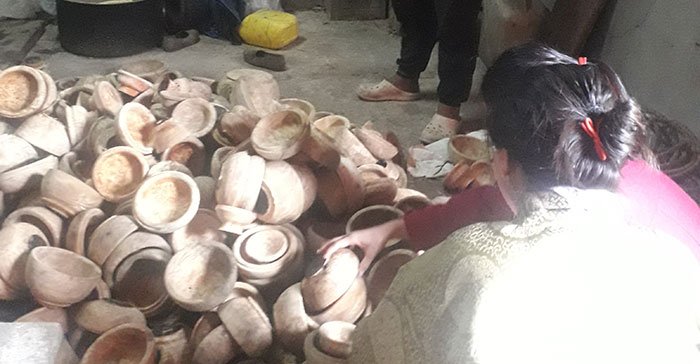Tshering Namgyal | Minjey
Karma Wanchuk of Tongling village in Minjey gewog, Lhuentse is a lone shadzop in the dzongkhag.
Originally from Toedtsho gewog in Trashiyangtse, the 48-year-old came to his second wife’s village some 15 years ago.
Along with him, he bought his shadzo skills. He is the fourth generation shadzop.
Raw materials are usually collected from 11th to 1st month of the Buddhist calendar. Then after hamrup (immediate initial scarving) it’s soaked in water for one and a half month. After that the finishing works are carried out for around four months between the third and the seven month. Finally, the polish called sey is done on the eighth Bhutanese month and the end products are dried.
Like any other shadzop, he makes traditional dapa (bowl), three types of cups, plates, thokey, and tsamder, among others, in his small workplace above his house. He said he had not been able to work actively for the last three years because his wife was unwell.
His annual income is around Nu 200,000.
Tongling community is immensely benefitted after he established the business. “Their livelihood has drastically improved by selling raw materials and their status is much better now,” a villager from the gewog said.
Karma said three villagers had come to learn the skills from him.
He said the unavailability of raw materials was a challenge. “There are only five dzongkhags in the country with raw materials and if they don’t give what is the use of doing this business and paying tax?” he asked.
Although community forests are exceptional, he said there was a requirement to get a letter from the tshogpa in the particular community and the gewog in order to get the pass. “To get the pass, it takes months after the territorial division office further prolongs. I think the immediate power should be with the government in the government reserved forest,” Karma Wangchuk said.
He said only two trees in a year was not enough. Finding a better wood called zabshi is impossible.
Because of those challenges, he said the production had gone down by more than 30 percent. “If not from the place where those materials are available, from where can we bring them?


